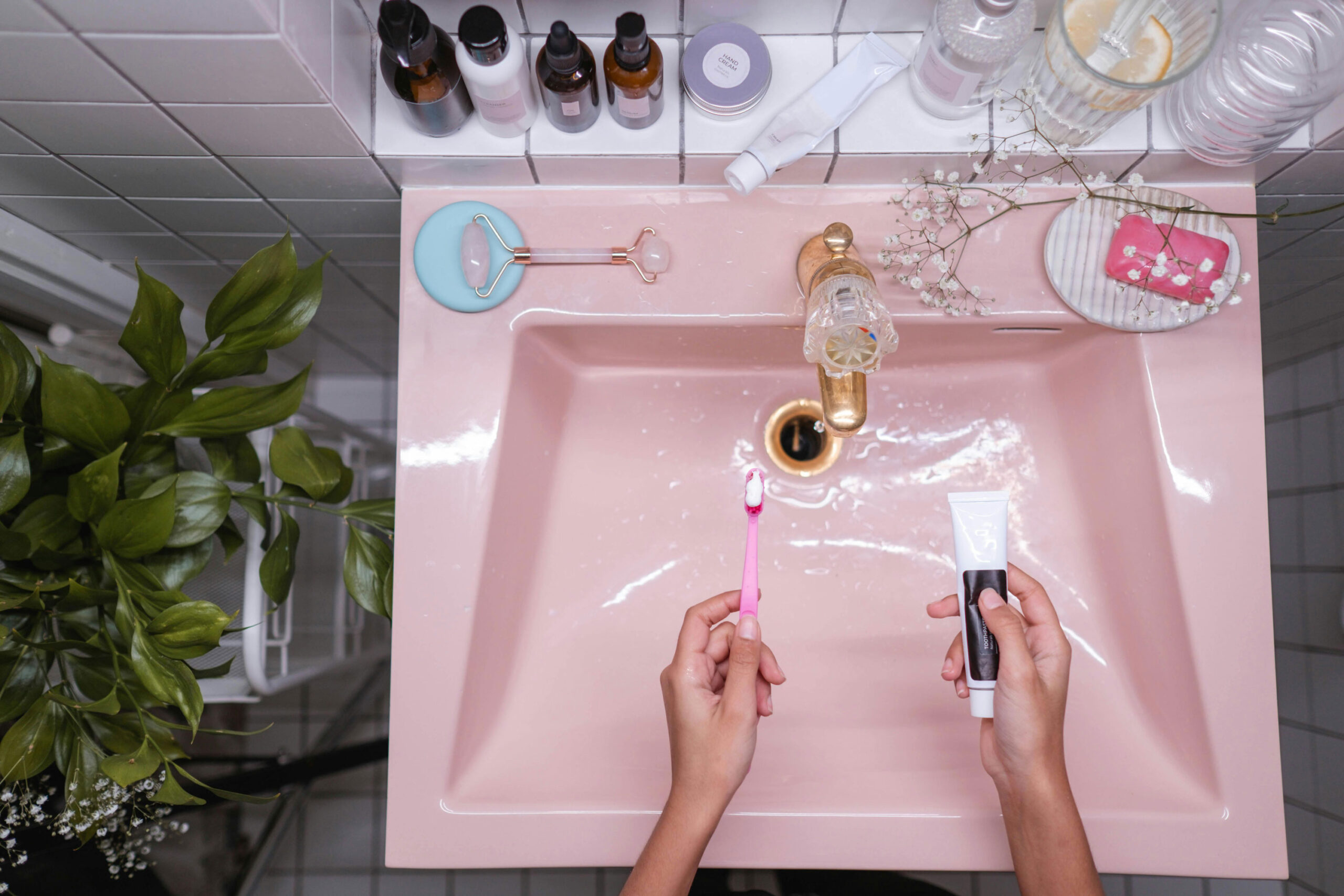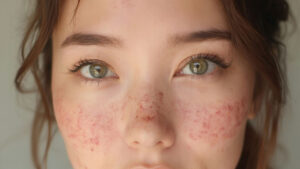Beauty trends and skincare regimens are evolving like never before. New ways to achieve glowy, dewy, healthy skin are revealed each day. It’s easy to find yourself standing in front of your vanity, a collection of serums, creams, and oils spread out, wondering which one goes first.
The order in which you apply your skincare products isn’t just a suggestion; it’s a crucial factor in ensuring their effectiveness. Applying products in the wrong sequence can render even the most expensive formulas useless, as active ingredients might not penetrate correctly.
This guide will demystify the skincare layering process for both your morning and night routines, optimizing your time and results. The golden rule? Apply products from thinnest to thickest consistency, allowing each product to fully absorb before moving to the next.
Why Does Skincare Order Matter?
Think of your skin as a sponge. If you apply a thick, occlusive cream first, it creates a barrier that prevents thinner, lighter products, like serums, from reaching and treating your skin effectively. By applying from thinnest to thickest, you ensure that active ingredients can penetrate where they need to go, maximizing their benefits.
Your Essential Morning Skincare Routine: A Step-by-Step Guide
Your morning routine focuses on protection from environmental aggressors and hydration to prepare your skin for the day.

Step 1: Cleanse
Start your day with a gentle cleanse to remove any overnight buildup of oil, sweat, and impurities. A mild, hydrating cleanser will prep your skin without stripping its natural moisture.
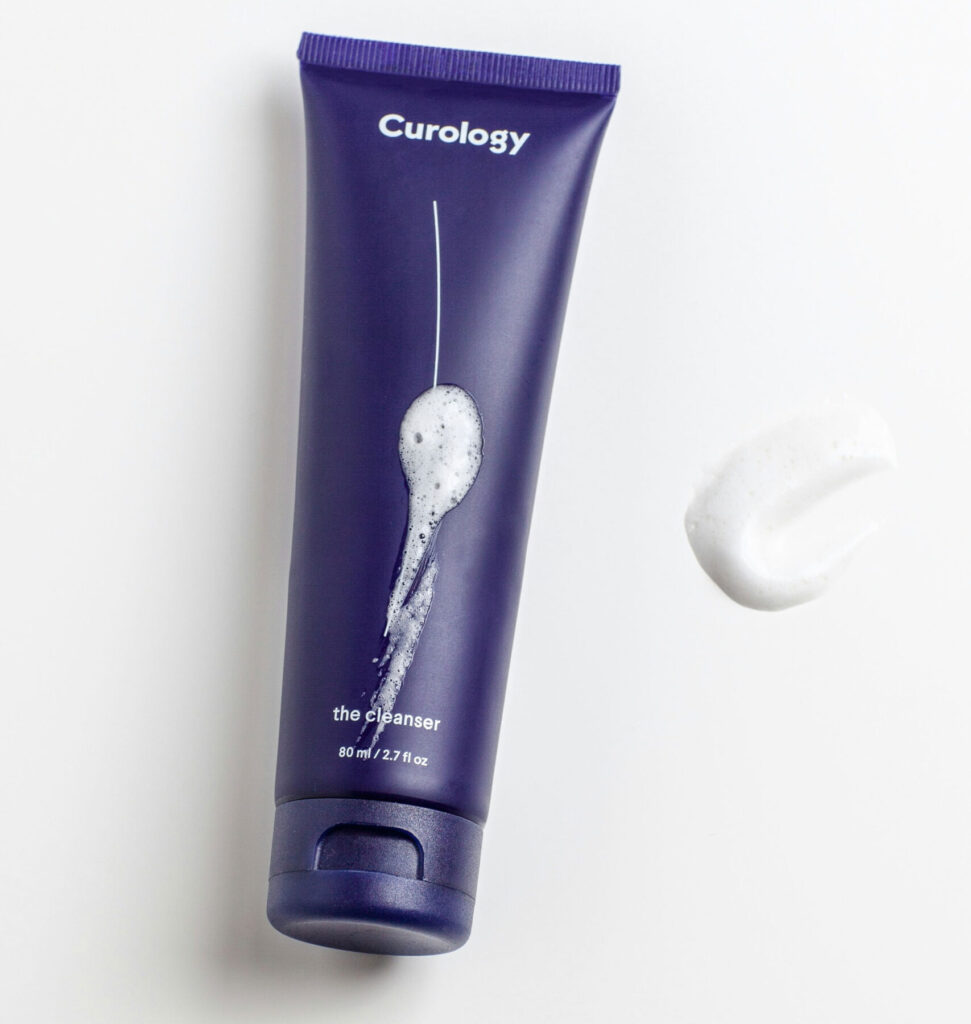
Step 2: Tone
After cleansing, apply a toner to balance your skin’s pH levels, remove any leftover impurities, and prep your skin for better absorption of subsequent products. Allow time for product to dry before moving onto the next step.
- Pro tip for combination skin: An alcohol-free hazel toner for combination skin can be excellent here. It helps to control oil in shinier areas while still providing a refreshing, non-drying feel to less oily zones.
Step 3: Serums (treatment)
Serums are concentrated formulas designed to deliver specific active ingredients to target skin concerns. Apply serums to slightly damp skin for optimal absorption. Some serums require 5 – 15 minutes to allow the skin to fully absorb the product. Review the instructions of your serums for best use. It’s advised to apply no more than 3 serums at a time, however, you should consult with your dermatologist for more personalized suggestions.
- For reducing redness: If you experience redness, a green tea serum for reducing redness can be a fantastic addition at this stage. Green tea is rich in antioxidants and has anti-inflammatory properties that can soothe the skin.
- For hyperpigmentation & brightening: If skincare for hyperpigmentation is a priority, a Vitamin C serum is ideal for your morning routine. Vitamin C is a powerful antioxidant that helps brighten the skin and protect against environmental damage. Apply this after your green tea serum if you use both.
- For dark spots (targeted): If you’re addressing specific dark spots, consider a cruelty-free vitamin E oil for dark spots after your other serums, as oils typically go before heavier creams, but after water-based serums. Vitamin E is known for its antioxidant and skin-healing properties, which can help reduce the appearance of dark spots over time.
Step 4: Eye Cream
The delicate skin around your eyes requires specialized care. Gently pat eye cream around your orbital bone using your ring finger.
- Targeting dark circles: While not a “product” in itself, integrating products designed for natural remedies for dark circles, like those containing caffeine or Vitamin K, into your eye cream step can be beneficial.
Step 5: Moisturize
This is a crucial step for all skin types, locking in hydration and supporting your skin’s barrier.
- For sensitive skin: A hypoallergenic aloe vera moisturizer is an excellent choice, especially for those with sensitive or reactive skin. Aloe vera is known for its soothing and hydrating properties, providing moisture without common irritants.
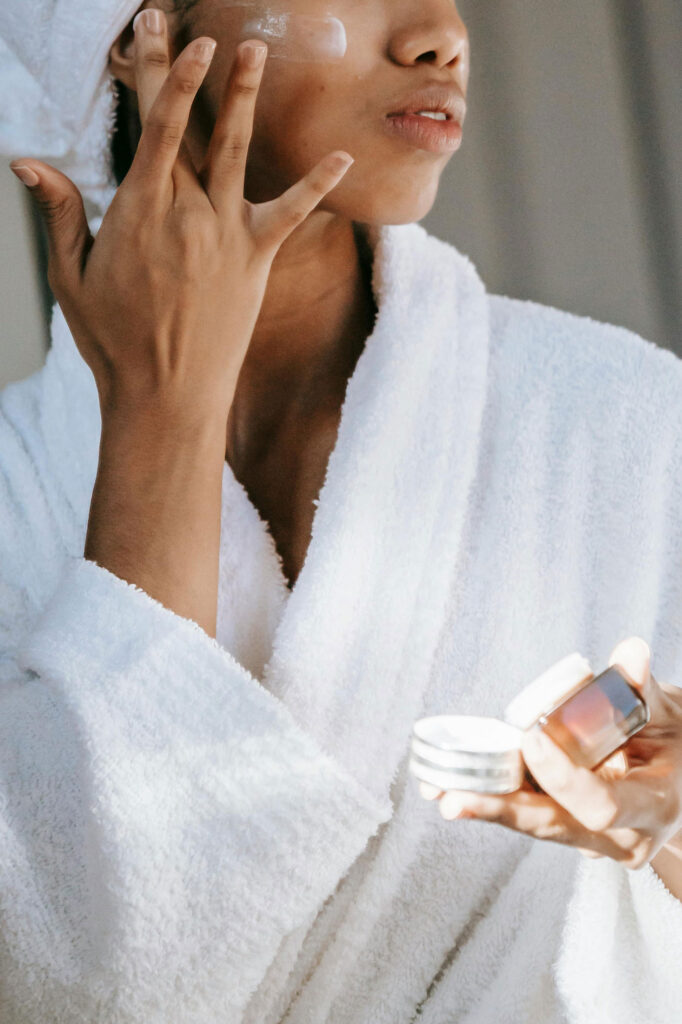
Step 6: Sunscreen (non-negotiable!)
The most vital step in your morning routine! Sunscreen protects your skin from harmful UV rays, preventing premature aging, hyperpigmentation, and skin cancer. Apply a broad-spectrum SPF 30 or higher as the very last step.
Your Restorative Night Skincare Routine: A Step-by-Step Guide
The evening is when your skin goes into repair and regeneration mode. Your night routine should focus on treatment and nourishment.
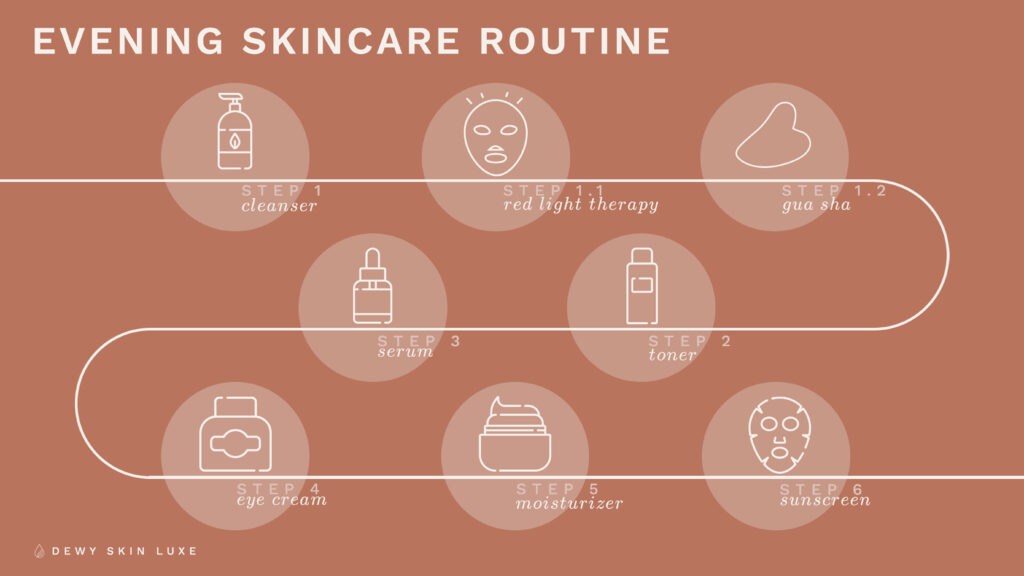
Step 1: Double Cleanse (optional, but recommended)
Especially if you wear makeup or SPF, double cleansing ensures all impurities are removed. Start with an oil-based cleanser to break down makeup and sunscreen, followed by a water-based cleanser to deep clean.
- Step 1.1: Red-light therapy (optional). If you own a red-light product, a freshly cleansed face is the best time to use it. If you’d like to learn more about red-light therapy, you can review our guide on red-light therapy products here.
- Step 1.2: Gua sha. After you’ve washed your face and finished a red-light therapy session, you can follow up with a gua sha routine. It’s advised to follow the red-light therapy because the oils or moisture necessary for gua sha can create a barrier that might impede the optimal penetration of the light wavelengths into your skin. However, you can gua sha immediately after washing your face and skip the RLT. You can read more about gua sha here.
Step 2: Tone
Just like in the morning, toning rebalances the skin and preps it for treatment products.
- For acne scars: If you’re looking for the best toner for acne scars, consider one containing gentle exfoliants like AHAs or BHAs, applied after cleansing to help with cell turnover. However, be cautious not to overuse if you’re also using retinol later.

Step 3: Treatment Serums
This is where your more potent treatments come in, working overnight to address specific concerns.
- For anti-aging & hyperpigmentation: This is the ideal time for a retinol. Retinol is a powerhouse ingredient for reducing the appearance of fine lines, wrinkles, and hyperpigmentation by promoting cell turnover. As retinol can increase sun sensitivity, it’s best reserved for nighttime use. Start with a low concentration and gradually increase frequency as your skin builds tolerance.
- Important: If you use retinol at night, review your morning routine products to ensure you avoid skin irritation. We wrote an informative guide here.
- Other serums: If you have other concerns, layer your serums from thinnest to thickest.
Step 4: Eye Cream
Reapply your eye cream to provide continuous hydration and treatment to the delicate eye area overnight.

Step 5: Moisturize / Night Cream
Your night moisturizer is often richer than your day cream, providing intense hydration and supporting skin repair while you sleep. Your hypoallergenic aloe vera moisturizer can be used here, or a dedicated night cream for added benefits.
Step 6: Face Mask (1-3 times a week, as needed)
If you’re incorporating a hydrating face mask, this usually goes after cleansing and toning, before serums and moisturizers, allowing the concentrated ingredients to penetrate. For overnight masks, they would be the final step after your moisturizer. It’s recommended to read the instructions of application and search which products to skip when using a facial mask, as it could result in over exfoliation or irritation, depending on the product(s) and your routine.
Essential Skincare Layering Tips
- Consistency is key: Sticking to your routine consistently will yield the best results.
- Listen to your skin: Pay attention to how your skin reacts. If you experience irritation, scale back on active ingredients or try fewer products.
- Patch test new products: Before applying a new product all over your face, test a small amount on an inconspicuous area (like behind your ear or on your jawline) to check for reactions.
- Allow absorption time: Give each product a moment or two to absorb before layering the next. This ensures maximum efficacy.
Frequently Asked Questions
What happens if I don't apply my skincare in the correct order?
Applying products in the wrong order can prevent them from working effectively. For example, a thick cream applied before a serum can create a barrier, stopping the serum’s active ingredients from penetrating your skin and delivering their benefits.
Can I skip steps in my skincare routine?
While a full routine is beneficial, you can adapt it based on your time and needs. The absolute minimum for morning is cleanser, moisturizer, and sunscreen. At night, cleanser and moisturizer are essential. However, adding targeted treatments like serums can significantly improve skin concerns.
Should I apply serum before or after moisturizer?
Always apply serum before moisturizer. Serums are typically lighter in consistency and contain concentrated active ingredients that need to penetrate the skin directly. Moisturizer, being thicker, seals in the serum and provides additional hydration.
When should I use a face mask in my routine?
Most face masks are applied after cleansing and toning, allowing their concentrated ingredients to work effectively. If it’s a rinse-off mask, you’d follow up with your regular serum and moisturizer steps. If it’s an overnight mask, it would typically be the last step in your routine.
Can I mix different active ingredients, like retinol and Vitamin C?
Generally, it’s best to use Vitamin C in the morning (for antioxidant protection) and retinol at night (for cell turnover and because it can increase sun sensitivity). Combining highly active ingredients like retinol with other strong exfoliants (like AHAs/BHAs) can sometimes lead to irritation, especially for sensitive skin. Always introduce new actives slowly and observe your skin’s reaction.
Is it okay to use an alcohol-free hazel toner for combination skin daily?
Yes, an alcohol-free hazel toner for combination skin is generally gentle enough for daily use, both morning and night. Unlike toners containing alcohol, which can be drying, alcohol-free versions help balance pH, soothe, and refine pores without stripping the skin’s natural moisture.
The content provided in this blog is for informational and educational purposes only. All product recommendations and skincare suggestions are intended to serve as general guidance and should not be considered a substitute for professional advice. Individual skin types and conditions vary, so please use discretion when incorporating new products or routines. We strongly recommend consulting with a licensed dermatologist or qualified healthcare professional before beginning any new skincare treatments, especially if you have sensitive skin, pre-existing conditions, or are currently using prescribed medications.
Note: All product links are for informational purposes and do not constitute endorsements. Always perform a patch test before introducing new products into your routine.

